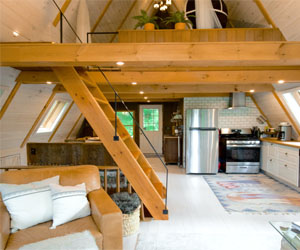


Streamline Your Space And Simplify Your Life

In our modern, fast-paced world, decluttering has become a popular trend, and for good reason. A clutter-free environment can lead to reduced stress, increased productivity, and a greater sense of well-being. Decluttering isn't just about getting rid of things; it's about making mindful choices to simplify your life and create a more organized and peaceful living space. In this article, we'll explore a range of effective decluttering tips to help you streamline your space and simplify your life.
1. Start Small
One of the most common mistakes when tackling clutter is trying to do too much at once. Start with a small area, like a drawer, a shelf, or a single closet. Completing one small area can give you a sense of accomplishment and motivate you to continue.
2. The One-Year Rule
If you haven't used or needed an item within the last year, consider whether it's truly necessary in your life. Apply the one-year rule when decluttering. If you haven't touched it in that time, it may be time to let it go.
3. Declutter By Category
Organize your decluttering efforts by category, not by room. For example, gather all your books, clothing, or kitchen items in one place and go through them systematically. This approach allows you to see the full extent of your possessions in that category.
4. Use The Four-Box Method
When decluttering a space, use the four-box method: one box for items to keep, one for items to donate, one for items to sell, and one for items to discard. This method helps you make decisions quickly and efficiently.
5. Minimalism In Mind
Embrace a minimalist mindset by focusing on quality over quantity. Ask yourself if you truly need multiple versions of the same item or if one well-made item will suffice. Reducing duplicates is a quick way to declutter.
6. The 12-12-12 Challenge
Try the 12-12-12 challenge to declutter. Find 12 items to throw away, 12 items to donate, and 12 items to return to their proper place. This challenge helps break down decluttering into manageable tasks.
7. Sentimental Items
Sentimental items often pose a significant decluttering challenge. When dealing with sentimental items, ask yourself if they truly bring you joy or if you're holding onto them out of guilt or obligation. Consider taking photos of sentimental items to keep the memories without the physical clutter.
8. Digital Decluttering
Don't forget about your digital life. Clear your email inbox, organize your digital files, and unfollow social media accounts that no longer serve you. A clutter-free digital space can lead to reduced stress and increased productivity.
9. Donate Or Sell Unwanted Items
Items that are in good condition but no longer serve you can be donated or sold. Many organizations are in need of donations, and selling items can help you recoup some of their value.
10. Maintenance Is Key
Decluttering isn't a one-time task; it's an ongoing process. Regularly assess your possessions and make decisions about what you want to keep. Consistent maintenance is crucial for preventing clutter from building up again.
Decluttering your living space can be a transformative experience, leading to a more organized, peaceful, and efficient life. By applying these decluttering tips and embracing a minimalist mindset, you can streamline your space, reduce stress, and simplify your life. The journey to a clutter-free environment is not only about the physical possessions you own but also about creating a space that truly supports your well-being and happiness.
Gardening For Wildlife
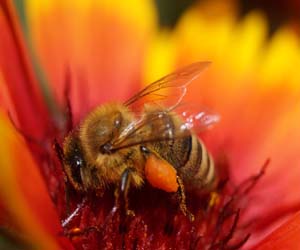 Pest Control: Many of the creatures you invite into your garden, such as birds and beneficial insects, are natural pest controllers. They help keep populations of garden-damaging insects in check.
Pest Control: Many of the creatures you invite into your garden, such as birds and beneficial insects, are natural pest controllers. They help keep populations of garden-damaging insects in check.
Pollinators: Gardens that attract pollinators like bees and butterflies ensure the successful pollination of plants, leading to bountiful harvests of fruits, vegetables, and flowers.
Education: Gardening for wildlife is an educational opportunity for children and adults alike. Observing the behavior and interactions of birds, insects, and other creatures fosters a deeper appreciation for nature.
Aesthetics: A garden designed for wildlife can be a beautiful and thriving oasis, filled with the sights and sounds of the natural world. It can be a serene and inviting place for human enjoyment.
Tips For Gardening For Wildlife:
Plant Native Species: Native plants provide food and habitat for local wildlife. Research which plants are native to your area and incorporate them into your garden.
Provide Water: Birds, insects, and other wildlife need water for drinking and bathing. Install a birdbath or a small pond to offer a water source.
Habitat Diversity: Create a variety of habitats in your garden, including meadows, woodlands, and wetland areas. Different creatures require different types of environments.
Shelter And Nesting Sites: Incorporate birdhouses, bat boxes, and bee hotels to provide shelter and nesting opportunities for various species.
Avoid Chemicals: Avoid the use of pesticides and herbicides, as these can harm the wildlife you're trying to attract. Embrace natural methods for pest control and weed management.
Composting: Composting kitchen and garden waste creates rich, nutrient-dense soil that benefits both your plants and the creatures in your garden.
Leave Wild Areas: Don't be too quick to tidy up your garden. Leave some areas wild and untamed, as they provide important cover and foraging opportunities for wildlife.
Feeding Stations: Set up bird feeders and hummingbird feeders to supplement the natural food sources in your garden, especially during winter when food can be scarce.
Navigating A Changing World
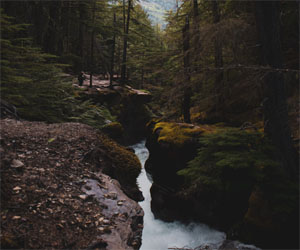 1. Climate Change
1. Climate Change
Climate change, primarily driven by the emission of greenhouse gases such as carbon dioxide and methane, is arguably the most urgent environmental challenge. It results in rising global temperatures, melting glaciers, sea-level rise, and an increase in the frequency and severity of extreme weather events. Climate change has far-reaching impacts on agriculture, water resources, biodiversity, and human societies, with vulnerable communities often bearing the brunt of its consequences.
2. Biodiversity Loss
The loss of biodiversity is a global crisis with ramifications for ecosystems and human well-being. Habitat destruction, pollution, overfishing, and invasive species all contribute to the decline of species and ecosystems. The loss of biodiversity threatens food security, disrupts ecosystems' ability to adapt to environmental changes, and compromises the availability of life-saving medicines derived from nature.
3. Air And Water Pollution
Air and water pollution continue to affect the quality of our environment and public health. Pollutants released from industrial activities, transportation, and agriculture contribute to air pollution, leading to respiratory diseases and other health issues. Water pollution, often caused by untreated sewage, agricultural runoff, and industrial discharges, contaminates water sources, harming aquatic ecosystems and endangering drinking water quality.
A Bright Path To Sustainable Energy
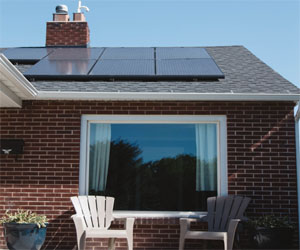 The Solar Journey
The Solar Journey
Going solar involves harnessing the sun's abundant energy through the installation of photovoltaic (PV) solar panels on your property, typically the roof of your home. The process is both exciting and straightforward:
Assessment: The journey begins with a thorough assessment of your property's suitability for solar panels. Factors such as sunlight exposure, shading, and the condition of your roof are taken into account to determine the best solar solution for your needs.
Design And Planning: Once the assessment is complete, a customized solar system design is created. This design takes into consideration your energy requirements and the available space for solar panels.
Permitting: Before installation can commence, you'll need to secure necessary permits and approvals from local authorities. Your solar installation provider will assist you with this essential step.
Installation: The solar panels and related equipment, such as inverters and mounting systems, are professionally installed on your property. These panels are strategically placed to maximize exposure to sunlight.
Connection To The Grid: In many cases, residential solar systems are connected to the energy grid. This connection enables excess energy to be sent back to the grid, often earning you credits or compensation.
Testing And Inspection: After installation, the system undergoes thorough testing to ensure it is functioning correctly. Inspections may also be conducted to verify compliance with local regulations.
Embracing Simplicity And Sustainability
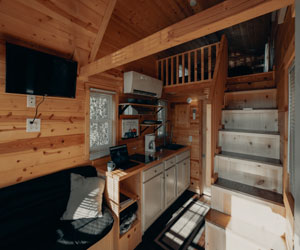 Tiny House Living isn't just about living in small spaces; it's a philosophy that's gaining popularity worldwide. It's a choice to downsize and simplify, allowing individuals and families to lead more intentional lives. The movement is driven by a desire to reduce environmental impact, lower costs, and free up time for what truly matters.
Tiny House Living isn't just about living in small spaces; it's a philosophy that's gaining popularity worldwide. It's a choice to downsize and simplify, allowing individuals and families to lead more intentional lives. The movement is driven by a desire to reduce environmental impact, lower costs, and free up time for what truly matters.
One of the most compelling aspects of the Tiny House Lifestyle is its focus on minimalism. Living in a tiny house necessitates a careful evaluation of one's possessions. This shift towards owning fewer things allows for a clutter-free, stress-free environment. People find themselves no longer burdened by the weight of material possessions but rather liberated to explore other aspects of life.
Maximizing space utilization is at the heart of tiny house design. Every square inch is carefully considered and used efficiently. Multi-functional furniture, built-in storage, and innovative space-saving solutions are key elements of tiny house living. These homes prove that you don't need a massive space to live comfortably; you just need a well-thought-out layout and design.
Leading The Way To Self-Sufficiency And Sustainability
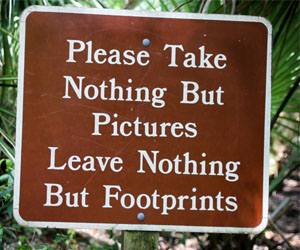 Off-grid pioneers are adventurers who have chosen to break free from the shackles of modern civilization, to take a step back from the hustle and bustle of urban life, and to reconnect with the natural world. They often opt for remote locations, nestled in the heart of nature, where they build sustainable homes, harness renewable energy sources, and cultivate their own food. Their goal is to reduce their ecological footprint and live in harmony with the environment.
Off-grid pioneers are adventurers who have chosen to break free from the shackles of modern civilization, to take a step back from the hustle and bustle of urban life, and to reconnect with the natural world. They often opt for remote locations, nestled in the heart of nature, where they build sustainable homes, harness renewable energy sources, and cultivate their own food. Their goal is to reduce their ecological footprint and live in harmony with the environment.
One of the defining characteristics of these pioneers is their resourcefulness. They are masters of ingenuity, using their creativity to overcome challenges that come with living off the grid. From constructing eco-friendly homes using natural materials to repurposing everyday items for new purposes, they exemplify the art of making do with what they have.
Adaptability is another key trait of off-grid pioneers. They understand that living off the grid requires flexibility and the ability to embrace change. These individuals are constantly learning new skills, from foraging for wild edibles to harnessing solar or wind energy, and are quick to adapt to the dynamic conditions of life in the wilderness.
Moreover, these pioneers are committed to reducing their environmental impact. They use renewable energy sources like solar panels and wind turbines, collect rainwater, and practice composting and recycling. By doing so, they serve as a shining example of eco-conscious living, demonstrating how it's possible to minimize harm to the planet even while residing in remote areas.
Off-grid pioneers are more than just isolated individuals; they often form tight-knit communities, where like-minded individuals come together to share knowledge, resources, and a sense of camaraderie. These communities not only provide emotional support but also enable the collective development of sustainable practices, from permaculture gardening to regenerative agriculture.